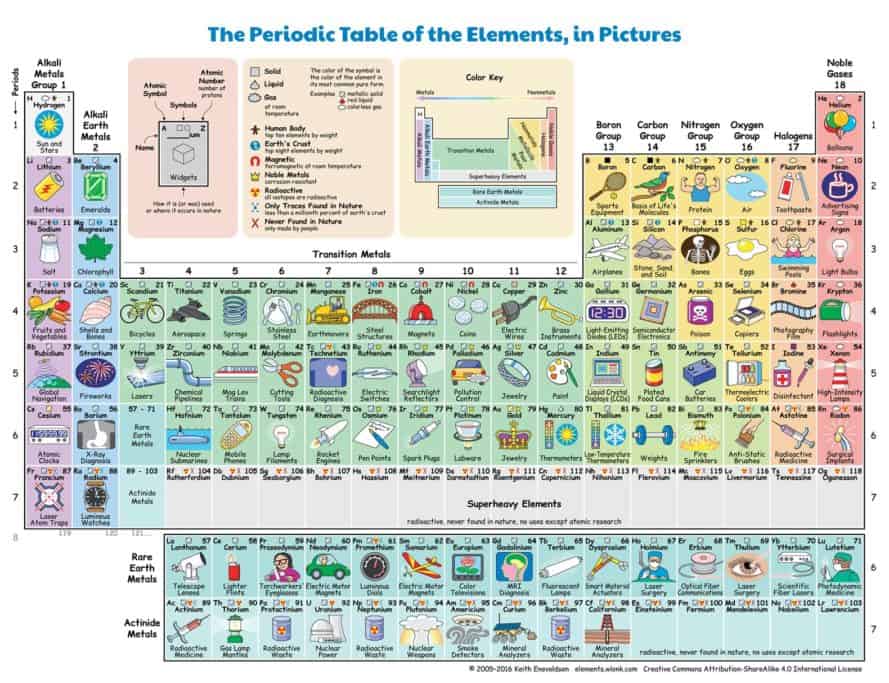
Growing up, children and teenagers learn about the periodic table. But as they develop into adults, do they actually understand the concept? Such was a question pondered by software engineer Keith Enevoldsen, which is why he designed an interactive Periodic Table of the Elements, in Pictures and in Words, which shows how seemingly-ordinary elements affect day-to-day life.
As Inhabitat reports, each element on the table comes with a description, as well as a list of a few different uses. For instance, when peering at the new-and-improved table, one is informed that scandium is found in bicycles, palladium is used for pollution control and that Krypton is in flashlights. The facts make science more interactive, which is essential for enticing more people — young and old — to care about the natural world and the tools used for everyday living.
The tables are also color-coded to show how the elements are grouped together. Additionally, symbols indicate whether an element is a solid, liquid or a gas. Other symbols show whether or not the element is common in the human body, is or is not more likely to be found within the Earth’s crust, whether or not it is radioactive, magnetic or noble, or if it’s rarely (or never) found in nature.

To ensure the interactive periodic table is as up-to-date as possible, Enevoldsen makes sure to modify the table when new elements are found. In November 2016, for instance, scientists approved four brand new element names: 113 Nihonium (Nh), 115 Moscovium (Mc), 117 Tennessine (Ts), and 118 Oganesson (Og). Look at the chart — you’ll find them!
If you’re interested in obtaining an interactive periodic table, they can be purchased online and are available in different formats (in words vs pictures). Enevoldsen also offers print-your-own element flash cards and runs the ThinkZone website which outlines various thought experiments to learn more about mathematics, language, science, history, art, geography, and music.
Via Inhabitat
What are your thoughts? Please comment below and share this news!


